Bed bugs feed on human blood, but can they also bite our pets? Should dogs and cats be afraid of these pests? What are the right steps to take? Serenid answers all your questions on the subject. Let’s go.
⚠️ Important: This article is for information purposes only and is not a substitute for veterinary advice.
Bed bugs and animals: key information
- Bed bugs rarely bite pets.
- The bites are often on areas with little hair (stomach, ears, legs).
- Bed bug bites are not dangerous for animals.
- Pets do not transmit bed bugs.
- Chemical treatments against bed bugs are dangerous for animals.
Can bed bugs attack animals?
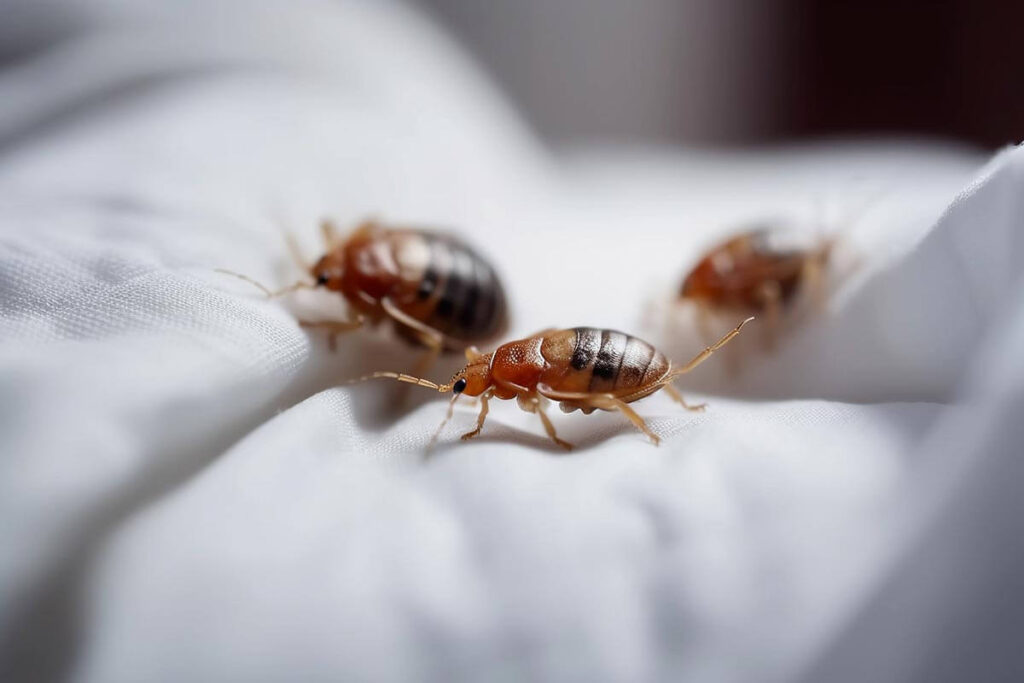
Bed bugs (Cimex lectularius) feed mainly on human blood.
Injections to animals such as cats and dogs are possible, but rare.
It is difficult for a bed bug to move through the hair of our domestic companions (the same goes for humans, bites do not occur in the hair). Moreover, bed bugs wait for the host to be still to feed, which is more complicated with animals that move much more.
➡️ Read also: The causes of bed bug infestation
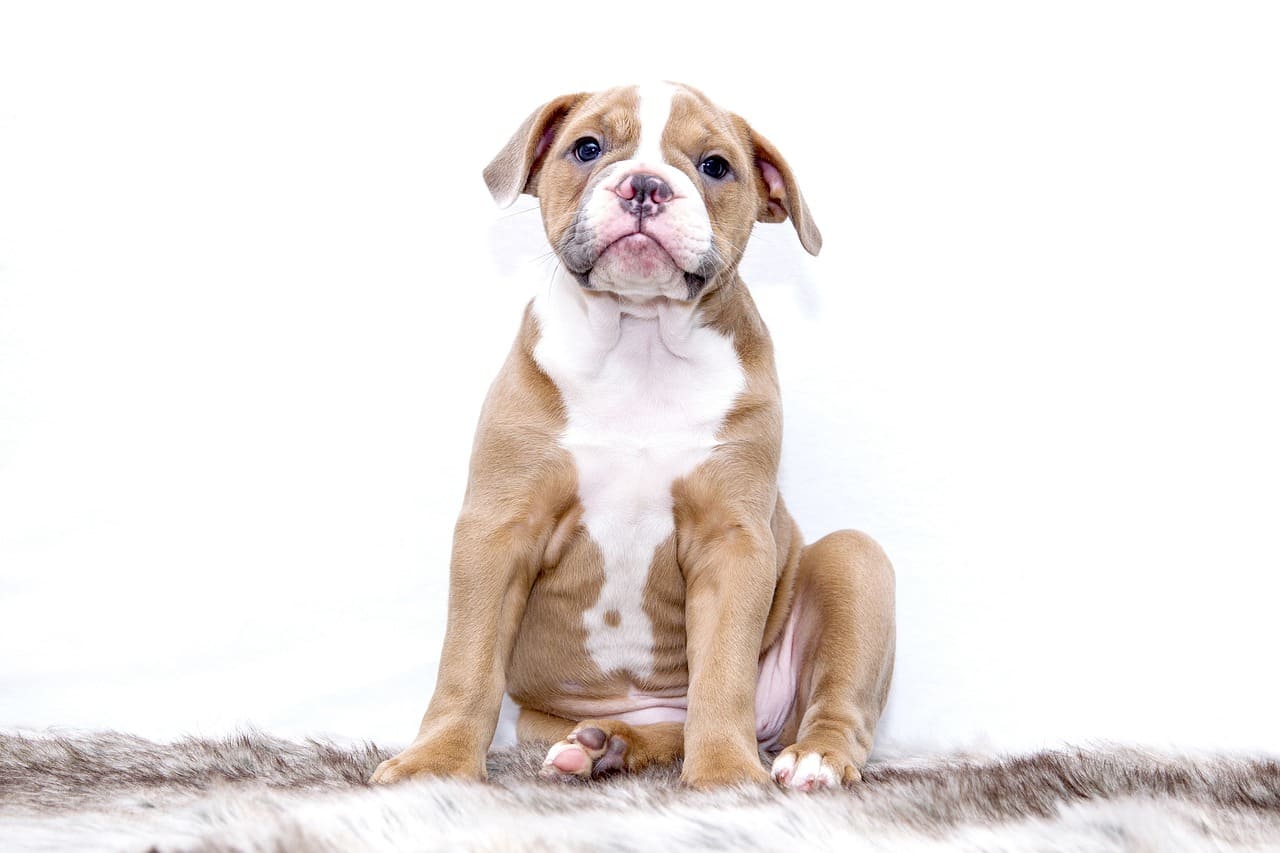
Bed bugs in dogs
Bed bugs do not settle directly on a dog’s coat like fleas or ticks would. However, if they do not have access to a human host, they can bite a dog, especially in bald areas such as the stomach, the inside of the legs or the ears.
What to do?
- Clean its environment: Wash its blankets, cushions, baskets, toys and any other fabric items at 60°C to eliminate bedbugs and their eggs.
- Vacuum thoroughly: Vacuum its basket, carpets and areas where it usually sleeps. Immediately dispose of the vacuum cleaner bag in an airtight bin.
- Treat bites: Wash the bitten area with lukewarm water and mild soap. Apply a soothing cream or a suitable veterinary product, as advised by your vet.
- Protect your dog: During anti-bedbug treatments in your home, keep your pet away to avoid any exposure to chemicals or hazardous residues.
Bed bugs in cats
As with dogs, cats can also be bitten by bed bugs, although this is rare. Thanks to their dense fur, bed bugs find it more difficult to reach their skin. They therefore target less hairy areas such as:
- The inside of the legs
- The abdomen
- EarsBed bugs in cats
What to do?
- Wash its environment: Machine wash its blankets, cushions and all textiles at 60°C or put them in the dryer at a high temperature to eliminate bedbugs and their eggs.
- Change its litter regularly
- Vacuum frequently-used areas: Vacuum its basket, cat tree, carpets and sofas. Empty the bag and dispose of it immediately in an airtight bin.
- Monitor its behaviour: If your cat is scratching excessively or showing signs of stress, consult a vet.
- Protect your cat: During a bed bug treatment, keep your cat away from the treated areas to avoid exposure to chemical insecticides that are harmful to its health.
➡️ To go further: The complete protocol against bed bugs.

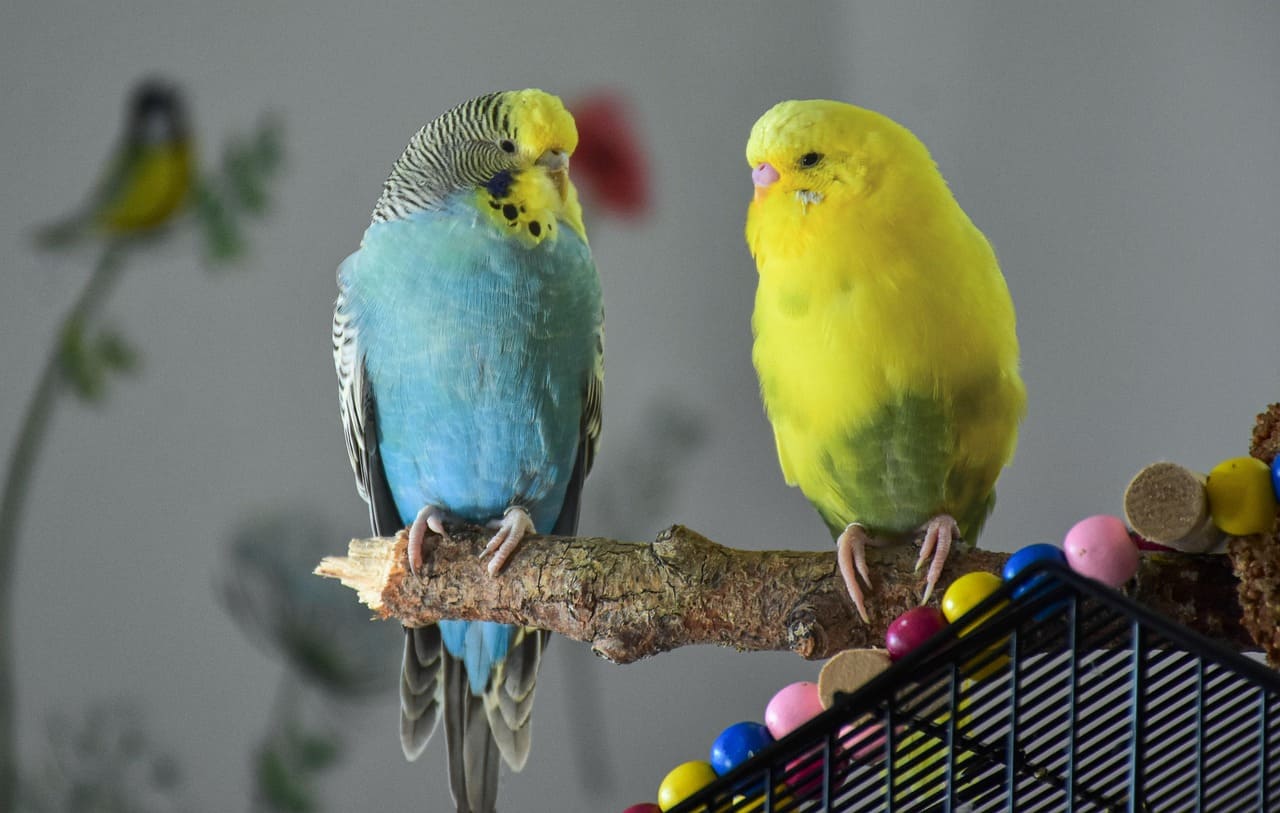
Bed bugs in birds
Bed bugs can also bite domestic birds such as chickens, although this is very rare. The most exposed areas are the parts of the body without feathers, such as the legs or around the eyes.
A bitten bird may show:
- Unusual agitation
- Swelling of the skin
- Lesions on the legs
- Ruffled plumage
- Weight loss due to stress and bites
Bed bugs can hide in birdhouses, litter, cages, under perches or in the corners of the room where the bird lives.
Good to know: Bird nests can be a source of bed bug contamination
What to do?
- Change the litter regularly
- Inspect the bottom and surroundings of the cage every day
- Remove accessories from the cage: branches, etc.
- Wash the cage
- Apply a treatment specifically for bed bugs
Bed bugs in reptiles
Bed bugs do not generally attack reptiles (snakes, turtles, lizards), as they do not provide ideal feeding conditions. These parasites prefer warm-blooded mammals, such as humans and pets.
However, in the event of severe infestation, bed bugs may seek refuge in terrariums/vivariums or under accessories such as heating pads and reptile hiding places.
What to do?
- Clean and disinfect the terrarium regularly
- Check every nook and cranny and cracks where bugs could be hiding
- Avoid using chemical insecticides that are harmful to reptiles (move them in case of treatment)
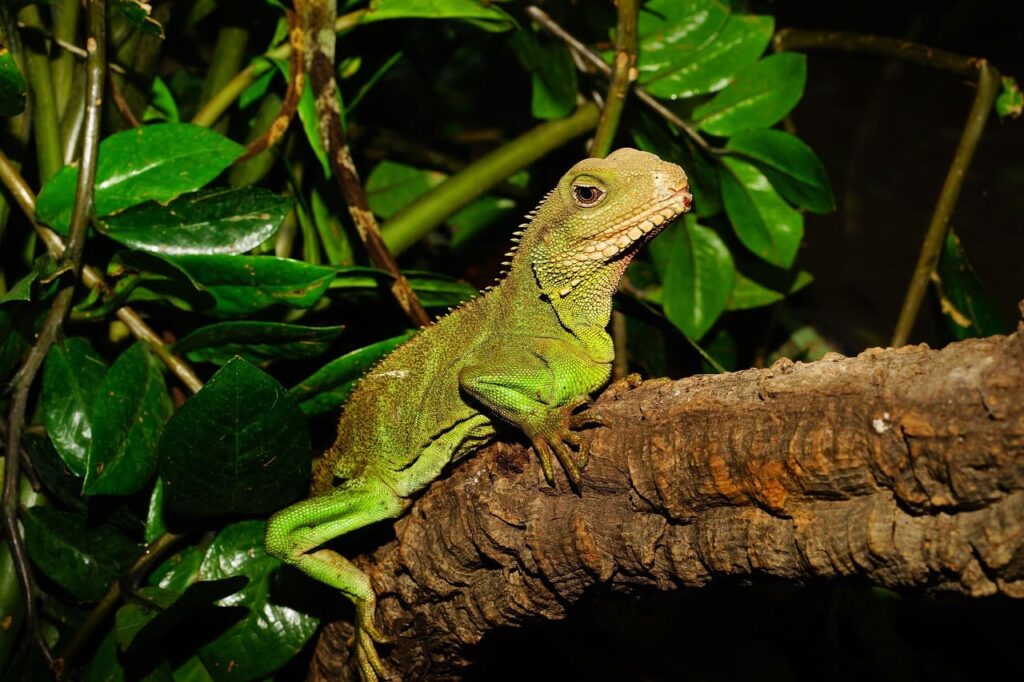
How can you recognise bed bug bites on a pet?
1. Appearance of the bites
- Small red or swollen bumps, often grouped in a line or cluster.
- Itching and irritation, more pronounced in sensitive animals.
- Affected areas: stomach, ears, muzzle, legs, areas with little hair.
➡️ Read also: Everything you need to know about bed bug bites.
2. Behavioural changes
- The animal scratches, nibbles or rubs itself more than usual.
- It shows signs of discomfort or restlessness, especially at night.
- Loss of appetite or unusual fatigue in case of severe irritation.
3. Differentiating bed bug bites from other parasites
- Fleas: Bites often scattered, intense itching and presence of small black dots (flea droppings) in the coat.
- Ticks: A single swollen lump with a tick attached to the skin.
- Lice: Rarer, more likely in farms and kennels.
Are bed bug bites dangerous for pets?
Don’t worry, bed bugs do not transmit diseases to animals.
However, their (rare) bites can cause various problems for dogs, cats, birds and other pets:
- Irritation and itching
- Allergic reactions
- Stress and behavioural disorders
- Mild anaemia in fragile animals
How can you relieve bed bug bites on your pet?
To soothe itching and prevent infection in your pet, here are the steps to take:
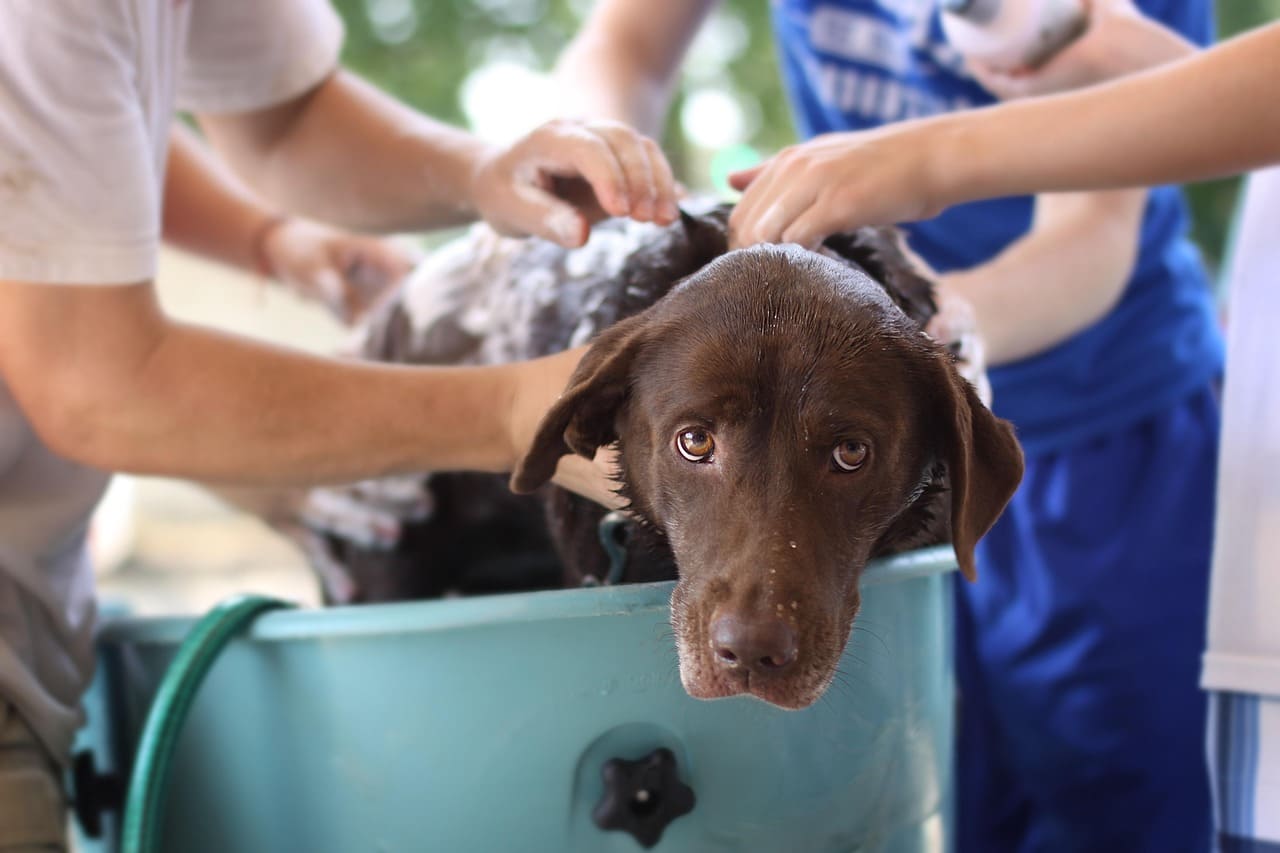
1. Clean your pet’s skin and coat.
- Gently wash the affected area with lukewarm water and mild soap suitable for animals.
- Dry the skin thoroughly to avoid maceration, especially in long-haired animals.
2. Apply a soothing treatment
- Use a specific soothing lotion for animals (based on aloe vera, calendula or camomile).
- You can also apply a cold water compress to relieve irritation.


3. Prevent your pet from scratching too much
.
- Trim your pet’s claws to limit injuries caused by scratching.
- For cats and dogs, a collar or a collar may be useful if licking is excessive.
- Consult a vet if necessary!
Don’ts!
🚫 Don’t use human cream, as some substances are toxic to animals.
🚫 Avoid pure essential oils, especially tea tree oil, which can be dangerous for cats.
🚫 Don’t put alcohol on bites, as this could irritate your pet’s skin further.
At the same time, it is crucial to treat your home to eradicate bed bugs.
Are chemical bed bug treatments dangerous for pets?
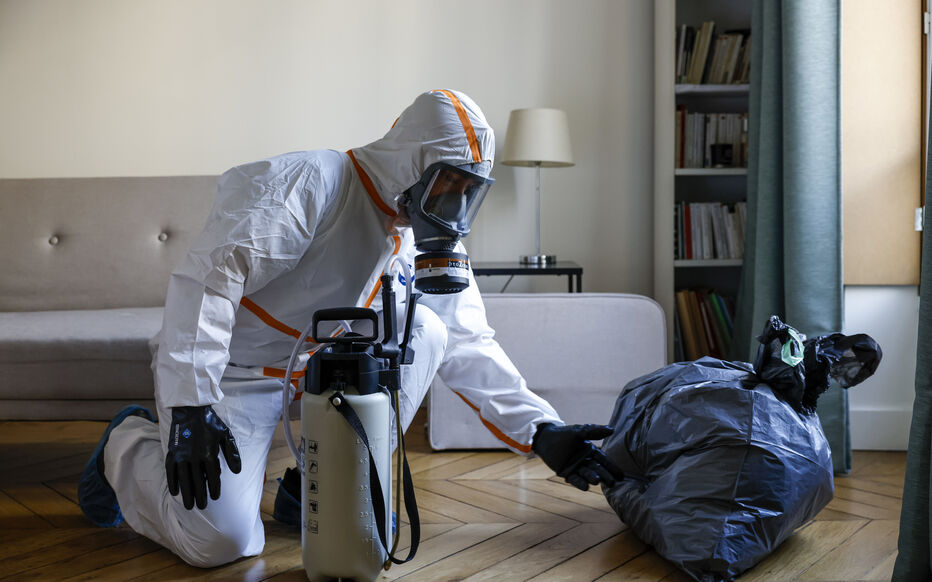
Yes, chemical bed bug treatments can be toxic to pets. Many insecticides used to eradicate these pests contain substances that are harmful to dogs, cats, birds and reptiles.
If treating at home, it is essential to remove your pets and all their accessories (litter, toys, cages, bowls, etc.) during and after application to avoid any risk of poisoning.
Above all, ask for advice from the professional who treats your home. They will be able to give you specific instructions: airing, washing at a high temperature, etc.
Opt for natural solutions
Chemical treatments should be a last resort and only used in the event of a serious infestation.
Above all, opt for natural treatments such as diatomaceous earth, anti-bug covers or high-temperature dry steam, which are safe for animals.
Good to know: Our range of Serenid products can be used in the presence of your animals.
Dogs: a formidable weapon for detecting bed bugs
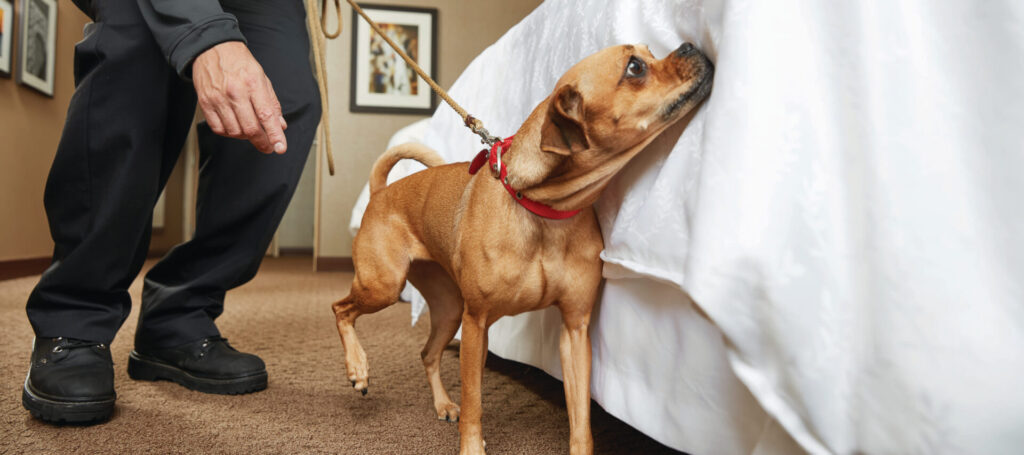
Thanks to their highly developed sense of smell, dog bed bug detectors are one of the most reliable ways to detect an infestation. In a few minutes, they are able to pinpoint the presence of these pests, even in hard-to-reach places such as mattresses, skirting boards or cracks.
Used by pest control experts, these specially trained dogs enable a quick and effective diagnosis, thus avoiding unnecessary treatments and directly targeting the infested areas. An effective solution to act quickly and limit the spread of bed bugs!
FAQ
Do animals transmit bed bugs to humans?
No, bedbugs do not live on animals and do not cling to their fur like fleas or ticks. They prefer fixed places (mattresses, skirting boards, nooks and crannies, etc.) to hide and wait for their blood meal.
What is the natural predator of bedbugs?
Skull crickets, geckos and certain beetles are predators of bed bugs. However, their presence in a house does not completely eliminate the infestation.
Can bed bugs hide in animal bedding?
No, bedbugs prefer dry, smooth surfaces such as mattresses, box springs and cracks in furniture. Your pet’s bedding is therefore not a favourable place for them to infest.
